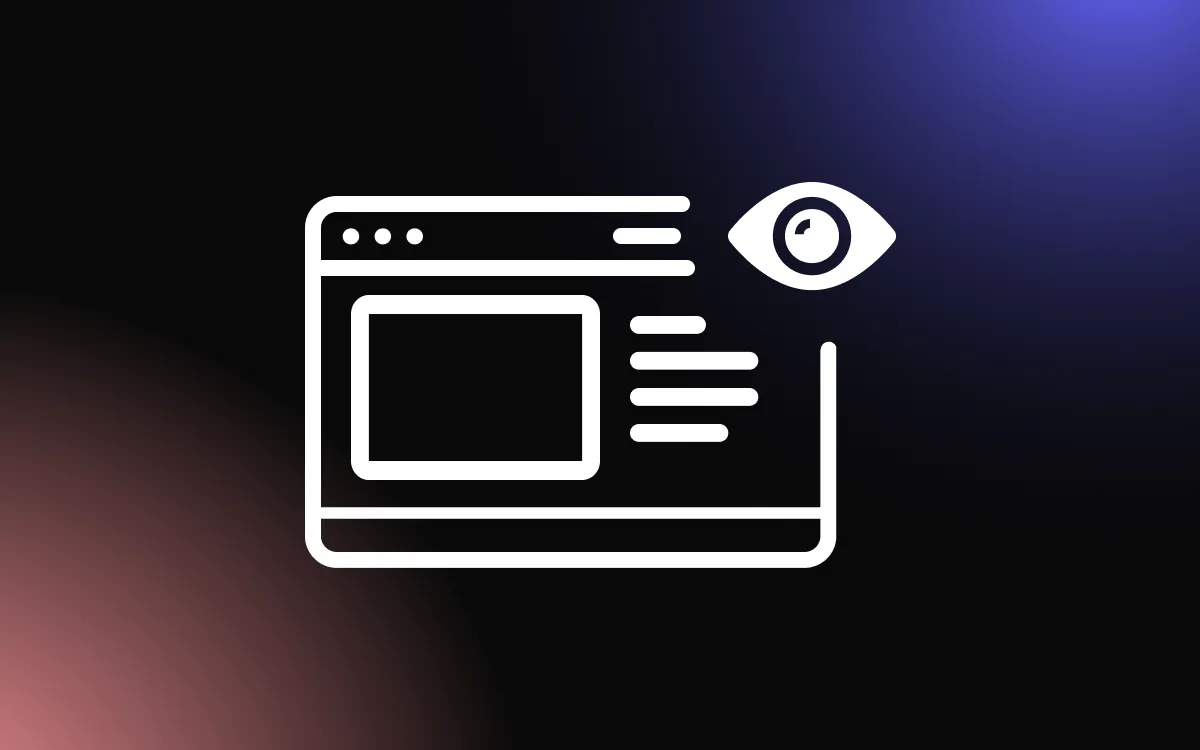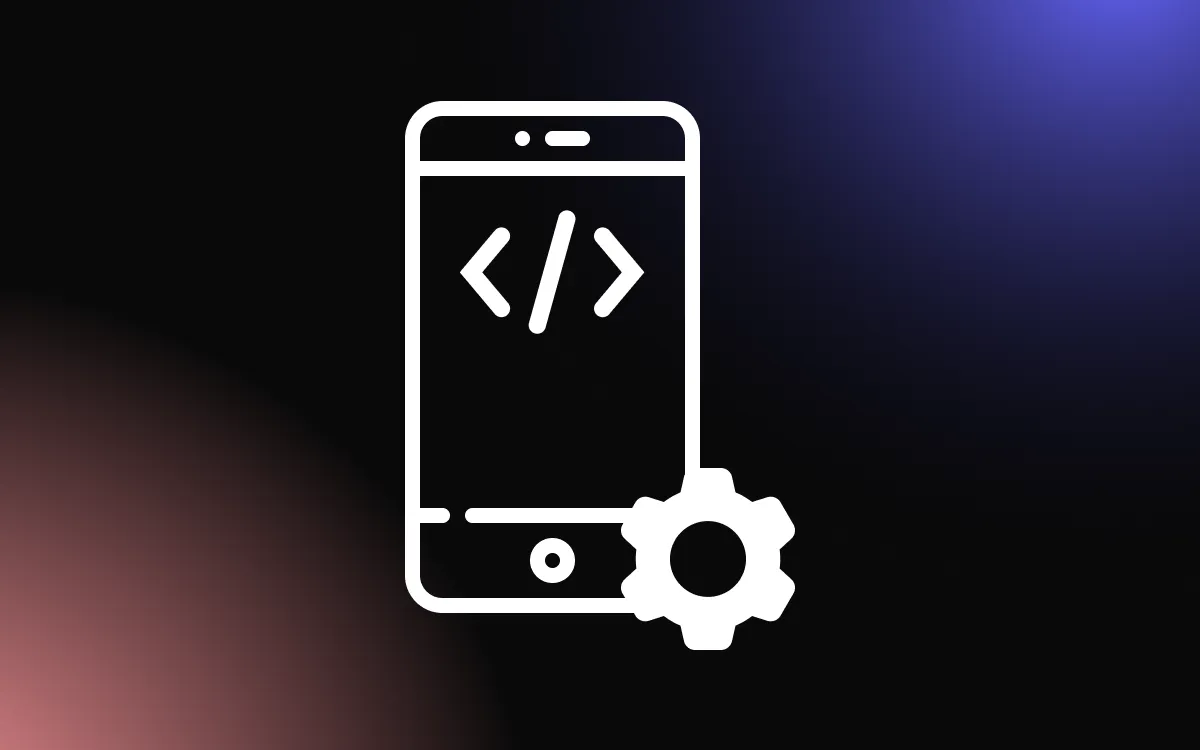
A website is often the first point of contact between a brand and its audience. But with countless websites vying for attention, how does one stand out?
Captivating website design goes beyond aesthetics; it's about creating an immersive experience that grabs and holds the viewer's attention. It's a blend of visual appeal, intuitive navigation, and compelling content that together create a memorable journey.
This article will explore the elements of captivating website design, offering insights into how to craft websites that not only attract visitors but also engage and retain them.
The Importance of Captivating Design

Nowadays, when users are inundated with a plethora of online content, the significance of captivating design has never been more pronounced. From websites to mobile apps, the design serves as the visual gateway to a brand's identity and its offerings.
First Impressions
A user's first encounter with a digital platform can make or break their relationship with a brand. Studies suggest that it takes mere seconds for users to form an opinion about a website, and much of this judgment is based on aesthetics.
Captivating design is not just about being visually pleasing; it's about creating an immediate sense of trust, professionalism, and relevance. When choices are abundant, and attention spans are fleeting, a well-designed interface can be the difference between a user staying on a page or moving on to a competitor.
The Link Between Design and User Retention
Beyond first impressions, design plays a pivotal role in user retention. A captivating design is often synonymous with an intuitive user experience. When users find a platform easy to navigate, with clear calls to action and consistent visual elements, they are more likely to engage with the content and return in the future.
Conversely, a poorly designed platform can lead to user frustration, reducing the likelihood of them returning or recommending the platform to others.
Elements of a Captivating Website Design
A website serves as the virtual storefront for businesses and brands. To stand out and captivate users, a website must incorporate a blend of design elements that not only appeal aesthetically but also enhance user experience. Here are some key elements that contribute to a captivating website design:
Striking Visuals and Imagery
A picture speaks a thousand words, and in the world of web design, the right imagery can convey a brand's essence instantly. High-quality, relevant images can set the tone for the entire website, making it more relatable and memorable.
Whether it's a stunning hero image, product photos, or background visuals, they should resonate with the brand's identity and the message it aims to convey.
Cohesive Color Schemes
Colors evoke emotions and set the mood for user interactions. A well-thought-out color scheme can enhance brand recognition and create a harmonious browsing experience. It's essential to choose colors that align with the brand's personality and values.
For instance, while blues might evoke trust and professionalism, warmer tones like oranges and reds might be associated with passion and energy. A cohesive color palette ensures consistency across the website, making it visually appealing and easy on the eyes.
Engaging Typography
Typography is more than just choosing a font; it's an art that influences readability and user engagement. The right typeface can communicate a brand's voice, be it formal, playful, or avant-garde.
It's crucial to select fonts that are legible across devices and complement the overall design. Pairing fonts, determining line spacing, and setting hierarchies are all part of creating an engaging typographic experience that guides users through the content seamlessly.
Interactive Elements and Animations
In the age of dynamic web experiences, interactive elements and animations can elevate a website's design. These elements, when used judiciously, can guide users, highlight important information, and add a layer of engagement.
From hover effects to parallax scrolling and subtle animations, these elements can make a website feel alive and responsive to user actions. However, it's essential to ensure that these interactions enhance the user experience rather than distract or confuse.
Techniques to Grab Attention

In the digital landscape, where countless websites vie for a user's attention, standing out becomes paramount. A website has mere seconds to captivate a visitor before they decide to stay or bounce.
To ensure users are instantly engaged, designers employ a variety of techniques that not only grab attention but also enhance the overall user experience. Here are some proven techniques to make a lasting impression:
Hero Images and Banners
A hero image is a large, prominent banner placed front and center on a webpage, often accompanied by a concise headline and call-to-action. This visual element serves as the website's virtual handshake, offering a powerful first impression.
High-quality, relevant hero images can instantly convey the essence of a brand or the purpose of a page, drawing users into the site's narrative. When paired with compelling copy, a hero image can effectively communicate a brand's value proposition and guide users deeper into the site.
Compelling Call-to-Action Buttons
Call-to-Action (CTA) buttons are crucial for guiding user behavior, be it signing up for a newsletter, purchasing a product, or exploring more content. A well-designed CTA button stands out without being obtrusive. It employs contrasting colors, enticing copy, and strategic placement to grab attention. The key is to make the CTA clear, concise, and compelling, ensuring users know exactly what action they're being prompted to take and why.
Video Backgrounds or Intros
Videos have the power to convey complex messages quickly and engagingly. Incorporating video backgrounds or intros on a website can instantly grab attention, offering a dynamic and immersive experience.
Whether it's a short clip showcasing a product, a behind-the-scenes look at a brand, or an animated explainer, videos can tell a story that static images and text might struggle to convey in the same timeframe.
However, it's essential to ensure videos are optimized for web performance and don't hinder the site's loading times.
Unique Scrolling Experiences (e.g., parallax)
Innovative scrolling techniques, like parallax, offer a multi-dimensional experience, where background and foreground elements move at different speeds, creating an illusion of depth.
Such scrolling experiences can make browsing a website feel interactive and engaging, encouraging users to explore further. When executed well, techniques like parallax can narrate a story, guiding users through a sequence of events or product features as they scroll.
Strategies to Hold Attention

Grabbing a user's attention is only half the battle. The real challenge lies in retaining that attention, ensuring visitors remain engaged and invested in your content.
As users become more discerning and their attention spans seemingly shorter, websites must employ strategic design and content choices to keep them hooked.
Here are some effective strategies to hold a user's attention:
Clear and Intuitive Navigation
A user's journey through a website should be as seamless as possible. Clear and intuitive navigation ensures that visitors can easily find what they're looking for, reducing frustration and bounce rates. Menus should be straightforward, with logical categorization and descriptive labels.
Additionally, features like breadcrumbs, search bars, and sticky navigation bars can further enhance the browsing experience, making it easier for users to navigate the site and access desired content.
Engaging Content and Storytelling
Content is the heart of any website. Beyond being informative, content should be presented in a manner that captivates and resonates with the audience. Storytelling is a powerful tool in this regard. By weaving narratives around products, services, or brand values, businesses can create a deeper emotional connection with users.
Whether it's through compelling copy, immersive visuals, or multimedia elements, storytelling can transform mundane information into memorable experiences.
Interactive Features (e.g., quizzes, calculators)
Interactive features add an element of engagement that static content often can't achieve. Tools like quizzes, calculators, or interactive infographics invite users to participate actively, offering personalized results or insights.
For instance, a skincare brand might include a skin assessment quiz, while a financial website could offer mortgage calculators. These tools not only provide value but also encourage users to spend more time on the site, exploring further.
Consistent and Familiar Layouts
While innovation in design is commendable, there's something to be said for familiarity. Users have grown accustomed to certain web design conventions, such as the placement of logos, menus, or CTAs.
Deviating too much from these conventions can confuse or disorient visitors. By maintaining consistent and familiar layouts, websites can offer a sense of comfort and predictability. This doesn't mean stifling creativity but rather balancing innovation with user expectations.
The Role of User Experience in Retention

When users have a plethora of options at their fingertips, retaining them has become more challenging than ever. While captivating designs can grab attention, it's the overall user experience (UX) that plays a pivotal role in ensuring users stay engaged and loyal to a platform or brand. Let's delve into the integral components of UX that influence user retention.
The Interplay Between Design and Usability
Design is the visual appeal of a website or app. It's the colors, typography, images, and layout that first catch a user's eye. However, a beautiful design that isn't user-friendly can quickly frustrate users, leading to high bounce rates.
Usability, on the other hand, refers to the ease with which users can navigate and interact with a platform. It encompasses clear navigation, intuitive layouts, and accessible features. When design and usability work in tandem, users not only enjoy the visual appeal but also find it easy to achieve their goals, be it making a purchase, signing up for a newsletter, or accessing information.
Speed, Responsiveness, and Mobile Optimization
In an era of instant gratification, speed is of the essence. Websites and apps that are slow to load can deter users, no matter how well-designed they are. A delay of even a few seconds can lead to significant drop-offs.
Moreover, with a growing number of users accessing websites via mobile devices, responsiveness and mobile optimization have become non-negotiable. A site that looks great on a desktop but is cluttered or unreadable on mobile will lose a significant chunk of its audience.
Feedback Mechanisms (e.g., live chat, feedback forms)
Engaging with users and addressing their concerns in real-time can significantly enhance retention. Feedback mechanisms, such as live chat, allow users to communicate their queries or issues instantly. This not only provides users with immediate solutions but also gives businesses insights into areas of improvement.
Feedback forms, on the other hand, offer a structured way for users to share their experiences, suggestions, or grievances. By analyzing this feedback, businesses can make informed decisions to enhance UX further.
Common Mistakes in Website Design

In the digital age, a website often serves as the first point of contact between a business and its potential customers.
While a well-designed website can enhance user experience and boost brand reputation, certain design missteps can deter visitors and harm a brand's online presence. Let's explore some common mistakes in website design and their implications.
Overloading with Information or Graphics
In an attempt to impress or provide exhaustive information, many websites make the mistake of cramming too much content or graphics onto a single page. This information overload can overwhelm visitors, making it difficult for them to locate the specific information they're seeking.
Moreover, excessive graphics can slow down page load times, leading to user frustration. A cluttered design lacks focus and can dilute the primary message a brand wishes to convey.
Inconsistent Design Elements
Consistency is key in design. Websites that use varying fonts, colors, or design structures across different pages can appear unprofessional and disjointed. Inconsistent design elements can confuse users and make navigation challenging.
For instance, if a call-to-action button is green on one page and blue on another, users may struggle to recognize it as the same functional element. Consistency not only enhances aesthetics but also improves usability by creating a predictable and familiar environment for visitors.
Ignoring Mobile Users
With a significant portion of web traffic coming from mobile devices, ignoring mobile optimization is a grave mistake. Websites that aren't mobile-friendly can be difficult to view and navigate on smaller screens.
Pinching, zooming, or horizontal scrolling can frustrate mobile users, leading them to abandon the site. Moreover, search engines like Google prioritize mobile-optimized sites in search rankings, so neglecting mobile users can also impact a site's SEO.
Tools and Resources for Captivating Design

Creating a captivating and memorable website is paramount. With the vast array of tools and resources available today, designers can craft unique and engaging websites that not only capture attention but also provide an exceptional user experience. Let's delve into some essential tools and resources that can elevate your design game.
Design Inspiration Websites
Before embarking on a design journey, seeking inspiration is crucial. Websites like Dribbble, Behance, and Awwwards showcase top-tier designs from professionals worldwide.
These platforms offer a plethora of design concepts, from minimalist layouts to intricate graphics, helping designers spark creativity and envision the potential of their projects.
Graphic and Animation Tools
To bring a design vision to life, robust graphic and animation tools are indispensable. Adobe Creative Cloud offers a suite of tools, including Photoshop for image editing, Illustrator for vector graphics, and After Effects for animations.
For web-specific animations, tools like GSAP (GreenSock Animation Platform) and Webflow allow designers to create fluid and interactive animations that enhance user engagement. These tools empower designers to craft visually stunning elements that can make a website stand out.
User Experience Testing Platforms
While a design may appear captivating, it's essential to ensure it resonates with the target audience. User experience testing platforms like UsabilityHub, UserTesting, and Lookback.io provide real-time feedback from actual users.
Designers can gain insights into how users interact with their designs, identify pain points, and make necessary adjustments. These platforms bridge the gap between design intuition and user preference, ensuring that captivating designs also offer optimal usability.
The Future of Captivating Web Design

The digital landscape is ever-evolving, and web design is no exception. As technology advances and user preferences shift, the future of web design promises to be even more immersive, personalized, and innovative.
Let's explore some of the emerging trends that will shape the future of captivating web design.
The Rise of Augmented and Virtual Reality Elements
With the increasing accessibility of Augmented Reality (AR) and Virtual Reality (VR) technologies, web design is set to undergo a transformative shift.
Websites will no longer be confined to two-dimensional screens. Instead, users will be able to interact with 3D elements, immerse themselves in virtual showrooms, or even take virtual tours of locations. This integration of AR and VR will redefine user engagement, offering experiences that are more interactive and lifelike.
Personalized User Experiences
The future of web design will prioritize personalization. With the help of artificial intelligence and machine learning, websites will be able to curate content tailored to individual users.
Whether it's product recommendations, content layouts, or even color schemes, every aspect of a website can be customized based on user behavior, preferences, and history. This level of personalization will not only enhance user engagement but also increase the likelihood of conversions, as users will feel that the website is genuinely catered to their needs.
Evolving Design Trends and Innovations
As with any creative field, design trends come and go. However, the future promises a blend of nostalgia with modernity. Retro designs, reminiscent of the early internet days, might make a comeback but with a contemporary twist.
Additionally, innovations like dark mode, fluid animations, and voice user interface are likely to become more prevalent. Designers will continuously experiment with new techniques, pushing the boundaries of what's possible in web design.
Conclusion
In conclusion, captivating website design is a harmonious blend of form and function. It's about creating digital spaces that are visually stunning, user-friendly, and aligned with the brand's message.
Remember, in today's competitive online landscape, a website's design can be the differentiating factor that sets a brand apart. With the insights and strategies shared in this article, you're now well-equipped to embark on a journey of crafting websites that not only grab attention but also hold it, ensuring a lasting impression on visitors. So, let's harness the power of design and create experiences that resonate, engage, and inspire.


